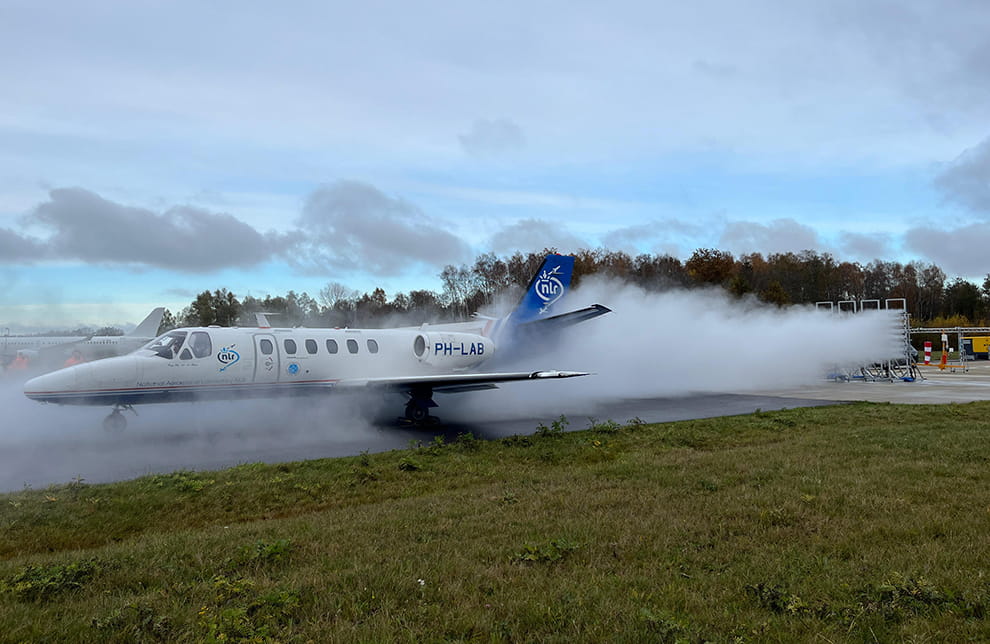Digital developments in the Schiphol control centre: Wilbur: data on passenger flows and ‘hot pax’
Amsterdam Airport Schiphol relies on a large number of processes all seamlessly interlocking to keep the airport running smoothly. Until a few years ago, each of these processes had its own monitoring system, which made it difficult to get a clear overview of operations and spot any potential constraints during the airport’s day-to-day operations. And so, in 2017, we began development on a solution: Wilbur.
One ‘data truth’ for everyone
Bas Kiers is one of the developers working on Wilbur. “Wilbur is a real-time dashboard that lets us use data to control all the airport processes centrally,” he explains. “Not only does it give us an overview of the current situation, it also looks 4–8 hours ahead to see where potential constraints could arise. Wilbur even offers suggestions, partly based on machine learning, to resolve the problems it anticipates. For example, it measures how busy the terminal is and what work is being done where, and lets us know for instance that it would be a good idea to direct a certain group of passengers to a different arrival filter. That lets us manage passenger flows much more efficiently and creates a better flow. I built a section into the overviews that shows how passenger flows move through the terminal, including how busy it is and the waiting times at security and border control.”
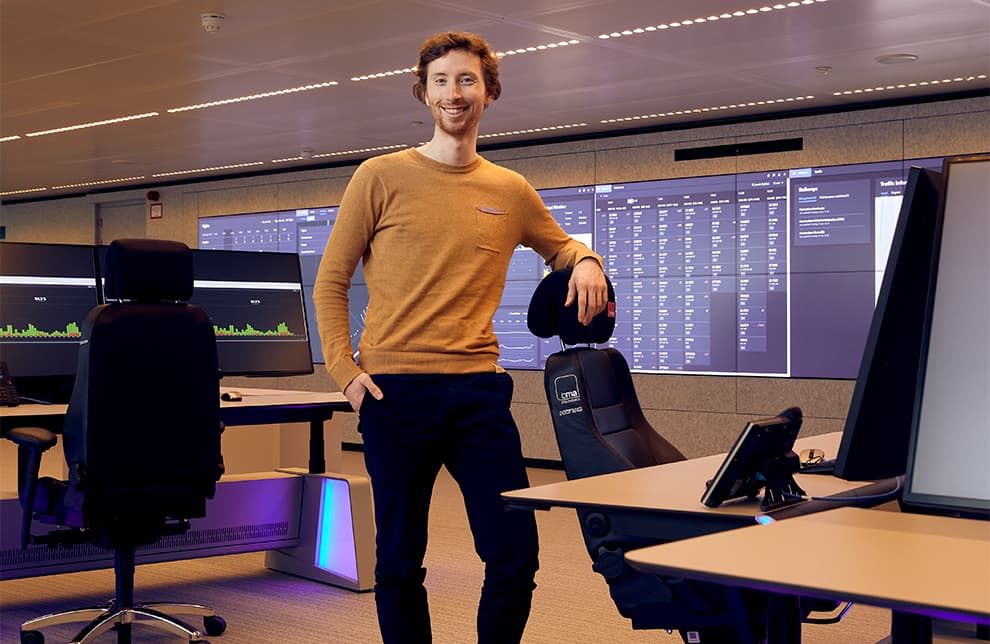
We want to create a single ‘data truth’ that can help us, the airlines, baggage handlers, the Royal Netherlands Marechaussee and air traffic control to make decisions. Read more about what Wilbur is already doing for us.
“Wilbur is a fantastic system right now,” says Bas, “but there’s always room for improvement. One of the things I’ve been working on is generating a clear overview of transfer passengers.”
Real-time data on transfer passengers
Schiphol is a key transfer hub. Almost 72 million people travelled via Schiphol in 2019, and more than a third of them were on their way to another destination. We guarantee travellers and airlines a transfer time of under an hour – under 40 minutes for European flight services. Airlines base their network and flight schedules partly on this guarantee, so it’s crucial for our control centre to make it a priority.
“That’s why we worked so hard to add more information about transfer passengers to the dashboard,” Bas explains. “Wilbur will soon be able to show how many passengers on a flight will find it difficult to make their connection; we call that the ‘hot pax’. If a passenger has a buffer of less than 15 minutes (accounting for time spent walking between gates, current waiting times at security or border control, etc.), the system will alert us. For example, imagine that a big storm is delaying the arrival of four intercontinental flights. We can see how many passengers will have difficulty catching their connecting flight, how many could be in trouble.”
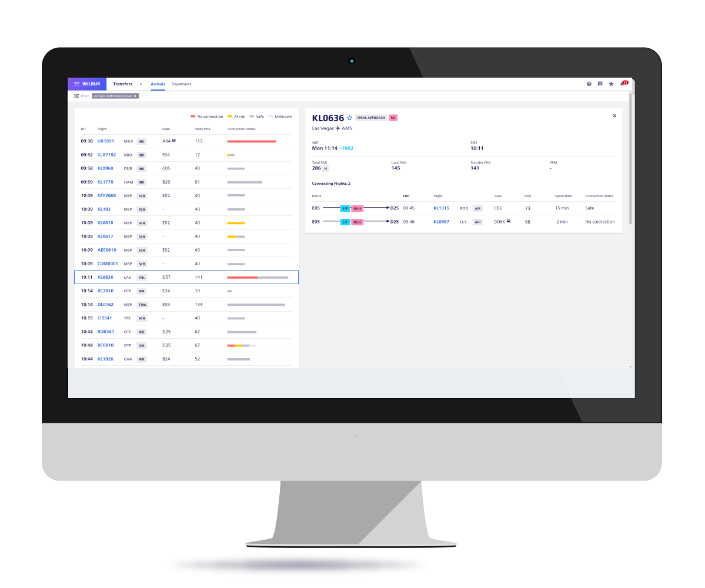
“It’s great that Wilbur gives us information about our own processes, but where it really adds value is that we can share this data with partners such as airlines, handling agents, the Royal Netherlands Marechaussee and air traffic control. Based on the situation Wilbur shows us, we can join forces on the ground to resolve any constraints.”
Proof of Concept: Save the hot pax
“It’s really frustrating when a passenger misses their connecting flight,” says Bas. “That causes people a lot of stress and hassle. Maybe you get stuck in a long queue at security or border control and you miss your flight; then your experience reflects badly on Schiphol and on the airline. And when transfer passengers miss their connecting flight, it costs an airline a lot of money, especially if it’s a big group. Just think of all the extra effort and even hotel costs they have to pay for. Of course we want to avoid that wherever possible.”
“Airlines know how many of their passengers are on which delayed flight, but they don’t have such a clear picture of what’s happening on the ground at Schiphol. For instance, we have data on walking times from gate to gate and waiting times at security and border crossings. We can use our knowledge of which large groups of passengers are at risk of missing their connections to work with the airline in question – maybe they could wait 10 minutes before they leave.”
“The next step is a Proof of Concept where we want to work with the airlines to see if there’s a smarter way to organise things. To give one simple example: if an airline is willing to wait, we can prioritise a group of passengers at the security check, or work with the gate schedulers to have the connecting flight leave from a closer pier.”
From data-driven decisions to automated actions
“First and foremost, Wilbur is a real-time dashboard,” says Bas. “Its secondary function is to offer suggestions for how to resolve constraints. A control officer then uses their knowledge and experience to choose a suggestion and sets actions in motion to resolve the constraint. What we want is a button that implements the chosen suggestion. A control officer would still decide what should happen, but the actions would be automated.”
Always developing
We are very proud that Wilbur has been nominated for a Computable Award in the category of Digital Transformation (link in Dutch). But that doesn’t mean that Wilbur has developed as far as it can. Processes can always be improved. As Bas puts it, “The end goal is for all data on the whole operation, both in the terminal and airside, to be available at a glance in Wilbur. And for all of us, the whole airport ecosystem, to be working from a single ‘data truth’.”
Interested in finding out more?
Would you like more information about transfer data in Wilbur or this Proof of Concept, or do you work for one of our sector partners and would you be interested in working with us in this area? Don’t hesitate to send an e-mail to digital@schiphol.nl.
Read the previous blogs
-
Monitoring APU usage to reduce emissions
Published on:Various sector partners at Schiphol are committed to reduce aircraft APU usage at Schiphol. To achieve this we are trying different things.
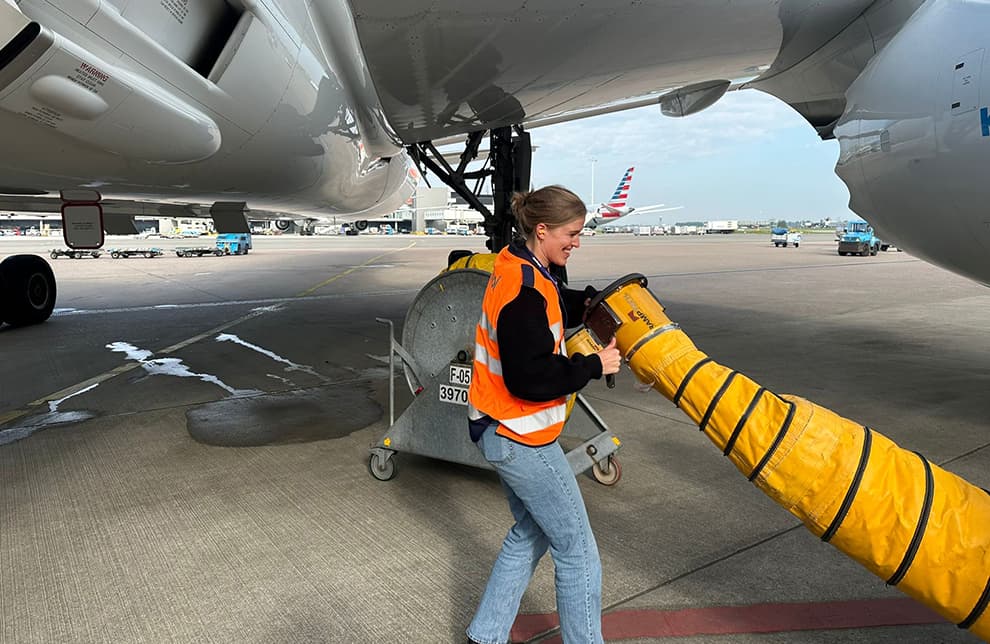
-
Tap and go with your Digital Travel Credential!
Published on:Can you board and cross the border faster with a digital travel document? At the request of the EU, we are testing a DTC together with the government and KLM.
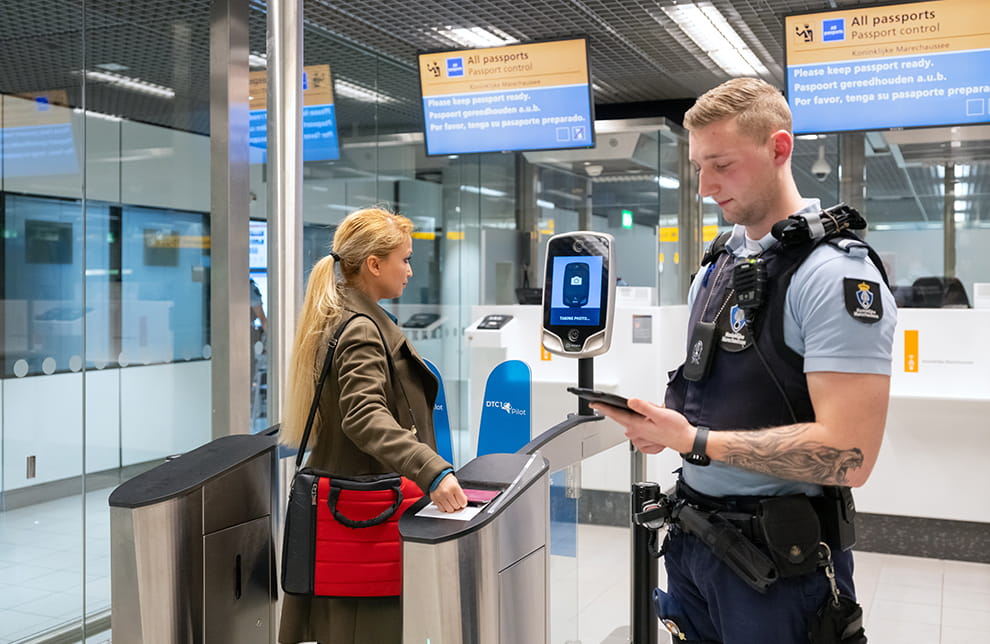
-
Test capturing ultrafine particles with droplets
Published on:We are working diligently to reduce the amount of ultrafine particles. A possibility is the use of water droplets to remove ultrafine particles from the air.
